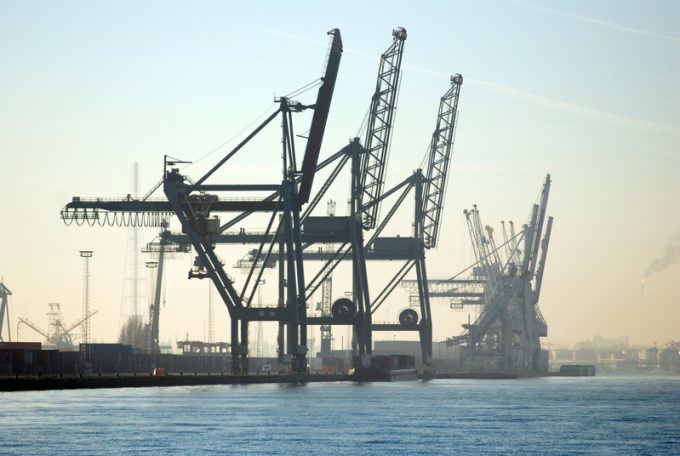Container spot rates have peaked as all major trades see prices fall
There was more evidence in this week’s container port freight markets that peak prices on ...
TFII: SOLID AS USUALMAERSK: WEAKENINGF: FALLING OFF A CLIFFAAPL: 'BOTTLENECK IN MAINLAND CHINA'AAPL: CHINA TRENDSDHL: GROWTH CAPEXR: ANOTHER SOLID DELIVERYMFT: HERE COMES THE FALLDSV: LOOK AT SCHENKER PERFORMANCEUPS: A WAVE OF DOWNGRADES DSV: BARGAIN BINKNX: EARNINGS OUTODFL: RISING AND FALLING AND THEN RISING
TFII: SOLID AS USUALMAERSK: WEAKENINGF: FALLING OFF A CLIFFAAPL: 'BOTTLENECK IN MAINLAND CHINA'AAPL: CHINA TRENDSDHL: GROWTH CAPEXR: ANOTHER SOLID DELIVERYMFT: HERE COMES THE FALLDSV: LOOK AT SCHENKER PERFORMANCEUPS: A WAVE OF DOWNGRADES DSV: BARGAIN BINKNX: EARNINGS OUTODFL: RISING AND FALLING AND THEN RISING

The last Shanghai Containerized Freight Index (SCFI) before the Chinese New Year holiday has recorded a modest softening of spot rates on the transpacific, while carriers were able to hold rates steady between Asia and Europe.
Spot rates between Asia and the US west coast fell by 2.3% to $1,993 per 40ft and by 2.6% for east coast ports to $3,054 per 40ft.
Historically, freight rates on the transpacific usually drop sharply after the CNY, due to weaker demand. According to the Freightos Baltic Index (FBX), last year prices tumbled by 22% for US east coast ports and by 25% for the west coast.
However, Philip Blumenthal, vice president of FBX, said there could be a different reaction this year, due to continued uncertainty over the outcome of trade talks between the US and China.
“What may buck this trend, artificially boosting demand, is another trade tariff increase,” he said.
Import duty of 25% on some 5,700 Chinese products was postponed from 1 January until 2 March, but the longer the negotiations drag on the more likely shippers will be to fast-track cargo to the US to avoid being stung by the increased tariffs.
Moreover, the transpacific carriers have blanked at least 40 eastbound sailings this month, which will also play a big part in underpinning prices on the route.
Meanwhile, the North Europe component of the SCFI was unchanged this week at $960 per teu, while the reading for the Mediterranean edged up marginally by 0.5% to $962 per teu.
Similar to the transpacific, Asia-Europe carriers have been radical in their capacity planning for the post-CNY period ,voiding a number of headhaul voyages in the weeks following the factory shutdowns.
However, there are concerns about weaker demand projections for North Europe, with several EU countries teetering on the brink of recession and UK businesses struggling with the Brexit uncertainty.
Additionally, the arrival of new ultra-large container vessels (ULCVs) has obliged the Ocean Alliance to add a seventh Asia-North Europe loop from April.
Combined with the upsizing of vessels on other loops, as well as one of THE Alliance’s strings receiving an upgrade, Alphaliner calculates that the westbound slot offering will raise by around 10% this year to 300,000 teu, significantly in excess of even the most optimistic of growth forecasts for the tradelane.
So what will happen to rates?
UK-based forwarder and NVOCC Westbound Logistics expects rates to begin to fall from the middle of this month. It said $200 per 40ft reductions “are already appearing” and the lines would probably reassess the situation mid-month.
George Griffiths, editor of Global Container Freight Market at S&P Global Platts, said that some carriers were indicating that the reduction “could be as much as $350 per 40ft”.
Elsewhere, one carrier contact told The Loadstar this week there was “some concern” about the forward booking situation for North Europe.
“It’s looking softer than we would like,” he said, adding that the publicity over the alliance upgrades had “given the wrong message to the market”.
Comment on this article